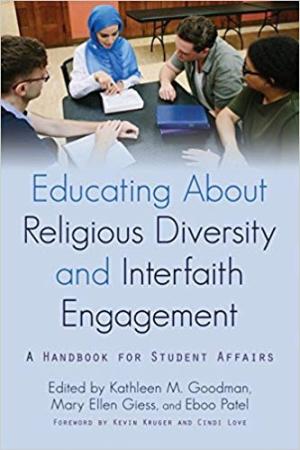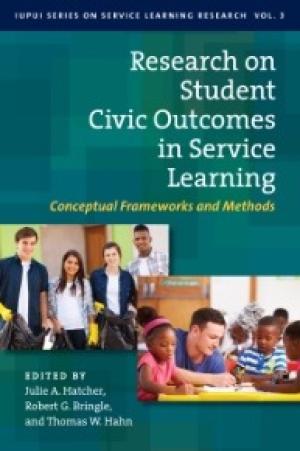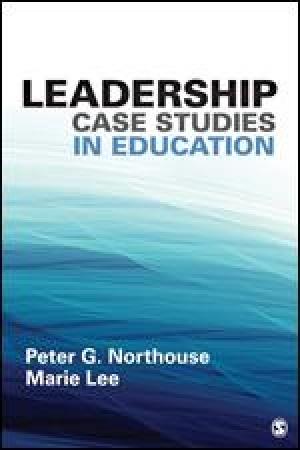Resources by Liora Gubkin

This book arises out of a recognition that student affairs professionals have little preparation or guidance in dealing with matters of spirituality, religion, secularity, and interfaith work at a time of greater diversity in students’ beliefs and, from a broad recognition that there is a need to engage with this aspect of student life. For those who don’t know how to begin and may be nervous about tackling a topic that has the potential to lead to heated disagreements, this book provides the resources and practical guidance to undertake this work. With the aim of providing student affairs practitioners and faculty with the tools they need to increase their comfort level and enable their ability to engage in discussions about belief both in and out of the classroom, the contributors provide foundational knowledge, concrete teaching ideas, sample activities, and case studies that can be used in a variety of settings. This book serves multiple audiences in student affairs by providing teaching ideas for practitioners who want to include a session or two about interfaith in their programs as well as ideas for student affairs faculty who may be teaching one session on this topic or a whole course. The book is divided into four sections. The first offers context, provides the findings of research, and asks readers to reflect on the framework they use to embark on this work, whether a social justice framework that aims to highlight issues of power and privilege or an interfaith cooperation framework that aims to create religious pluralism. Part Two provides concrete ideas for creating courses, activities, events, and programs focused on spirituality, religion, secularity, and interfaith engagement, as well as ideas for incorporating these topics into courses typically offered in student affairs preparation programs. Part Three presents case studies to engage students, practitioners, and faculty in thinking about campus situations related to religious diversity. Part Four provides some basic information about a variety of religions and worldviews held by college students. (From the Publisher)

Research on Student Civic Outcomes in Service Learning: Conceptual Frameworks and Methods is the third volume in a series dedicated to research on service learning. This volume, with its timely focus on civic outcomes, is divided into three sections. It begins with an introduction to how student learning outcomes are embedded in service learning, then moves on to various theoretical frameworks by which one can situate research. It concludes with some nuts and bolts aspects of conducting research on student civic outcomes in service learning, defined as “a course or competency-based, credit-bearing educational experience in which students (a) participate in mutually identified service activities that benefit the community, and (b) reflect on the service activity in such a way as to gain further understanding of course content, a broader appreciation of the discipline, and an enhanced sense of personal values and civic responsibility” (10). All three chapters in Part One are useful to the novice in this research area. “Introduction to Research on Service Learning and Student Civic Outcomes” provides a taxonomy of service learning courses, with essential attributes and levels of development for instructors to improve the quality of civic learning opportunities within service learning courses along with clear factors for individual as well as institutional research and assessment. “Student Civic Outcomes in Higher Education” offers a helpful literature review of civic outcomes, while ”Student Civic Learning through Service Learning” concludes Part One with two pertinent questions: (1) What do we know about cultivating civic learning through service learning courses? (2) What do we still need to learn about how the variables of course design influence civic learning? One key point repeated in each chapter is that civic outcomes in service learning should focus on learning with others and not doing for others. Part Two explores research on civic outcomes in service learning through multiple disciplines and theoretical perspectives including social psychology, political theory, educational theory, philanthropic studies, human development, community psychology, critical theories, and activity theory. The chapter “Critical Theories and Student Civic Outcomes” most directly questions the “individualistic” and “server-centered” approach to service learning (184), noting, for example, that serving at a soup kitchen often counts as service learning but protesting does not (187). A critique of the AAC&U Civic Engagement VALUE rubric is particularly thought-provoking on issues of access and power (187-190). Part Three turns more directly to the how-to of conducting research with chapters on quantitative, qualitative, and longitudinal research along with chapters on institutional characteristics and using local and national datasets. One of the most interesting chapters in this section, “Documenting and Gathering Authentic Evidence of Student Civic Outcomes,” asks “What counts as good evidence of learning and for whom?” (303). The chapter identifies two challenges familiar to those who work with assessment: making outcomes explicit and collecting authentic evidence (304-305). Unfortunately, much existing research depends on indirect evidence, and the chapter recommends use of the AAC&U VALUE rubric along with ePortfolios to enable formative and summative assessment. Each chapter of the volume concludes with an extensive reference section. The volume is worthwhile for teachers and researchers who want to improve students’ service learning as a site for civic engagement.

Northouse and Lee adopt the definition of leadership put forth by Northouse in his influential textbook Leadership Theory and Practice: “Leadership is a process whereby an individual influences a group of individuals to achieve a common goal” (2). The co-authors state that the common goal of educators is “to create a safe place where students can effectively learn and grow” and so it follows that leadership – the process of influence – is central to the educators’ vocation (2). During the past one hundred and fifty years, researchers have offered multiple approaches to understand precisely how leadership works, and Lee and Northouse succinctly summarize various approaches and provide case studies based on actual situations in education to help readers to apply the theoretical concepts. Following their introduction, each of the remaining fifteen chapters in Leadership Case Studies in Education presents one theory for understanding leadership along with two case studies, one focused on K-12 and one in higher education. The first half of the book generally parallels developments in leadership research in the twentieth and twenty-first centuries, beginning with theories that hone in on the leader’s characteristics or actions (trait, skills, and behavior) and moving to theories that explain group processes (situational, path-goal, and leader-member exchange). Chapters eight through ten examine more recent descriptions of th e qualities of a leader presenting transformational, authentic, and service leadership theories. These are followed by chapters on adaptive leadership, psychodynamic approach to understanding leadership, ethics, and team leadership. The book concludes with case studies that highlight the significance of gender and culture. The sixteen higher education case studies cover a range of leadership positions. Three of the case studies feature a university president; six present situations faced by administrators or staff working outside of academic affairs; one is about a student leader; and six focus on faculty. A set of six questions concludes each case study. The first three directly address the case study, while the second set connects the case study to Northouse’s text. Northouse and Lee wrote Leadership Case Studies in Education as a companion text to Northouse’s Leadership Theory and Practice. The case study text offers compact summaries of each leadership theory, which are intended to serve primarily as review of the more thorough presentation and assessment in the main text. For example, in Theory and Practice, Northouse devotes thirteen pages to leader-member exchange theory, describing early and later studies, explaining how the theory works, presenting its strengths and limitations, and suggesting possible application. Case Studies condenses this to less than three pages. Northouse and Lee write that their intended audience is “undergraduate and graduate classes in education and educational leadership,” (ix) so it is not surprising that its usefulness to this audience may be limited. The case studies draw on real-life situations but are missing discussion and analysis. This may be a useful companion textbook for classes in educational leadership, but without the corresponding textbook Leadership Case Studies in Education misses an opportunity to influence readers outside the classroom in the common goal of improving education.